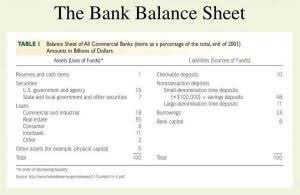The extra $5,000 Partner C paid to each of the partners, represents profit to them, but it has no effect on the partnership’s financial statements. A new partner may be admitted by agreement among the existing partners. When this happens, the old partnership may or may not be dissolved and a new partnership may be created, with a new partnership agreement. For US tax purposes, a technical termination may be caused if more than 50% of the partnership interests change hands in the same (US) tax year. If total revenues exceed total expenses of the period, the excess is the net income of the partnership for the period.
Equal percentage reduction
- In effect, each of the two partners sold 16.7% of his equity to Partner C.
- In an equal partnership bonus paid to a new partner is distributed equally among the partners.
- This is a variation on (b) above and always causes problems for candidates.
- They belong only in the division of profit statement section.(b) Do not include drawings anywhere in the income statement or statement of division of profit.
- Dale is contributing Accounts Receivable with a book value of $2,000, but since the partnership expects to collect only $1,600, that is the amount of capital contribution credit he will receive.
- The tax responsibility passes through to the individual partners, who are not considered employees for tax purposes.
As such, it covers all of the learning outcomes in Section H of the detailed Study Guide for FA2. Debit to Cash increases the account, while debit to a capital account of a partner decreases the account. partnership accounting does not: Why would the existing partners allow a new partner to buy an equal share of equity with smaller contribution? It might be because the new partner brings something very valuable to the partnership.

Statement of partners’ equity
Write up the partners’ current accounts for the year ended 31 March 20X3(3 marks) (12 marks in total). Interest on drawingsCharging interest on drawings is a means of discouraging partners from withdrawing excessive amounts from the business. From this, it follows that interest on drawings is a debit entry in the partners’ current accounts and a credit entry in the appropriation account. In a general partnership, all partners share liabilities and profits equally. In other types of partnerships, profits may be shared in different percentages or some partners may have limited liability. Partnerships may also have a “silent partner,” in which one party is not involved in the day-to-day operations of the business.
Withdrawal of Funds

If a partner takes assets other than cash from the business, a credit is applied to the recorded asset, and a debit is deducted from the partner’s capital account. A credit is applied to the cash account, and a debit is drawn from the partner’s capital account whenever a partner pulls funds or other assets from the business. If a partner is contributing (or withdrawing) capital, the relevant amount will be recorded in both the partner’s capital account and the bank account. A contribution will be a credit entry in the capital account and a debit entry in the bank account, and a withdrawal will be a debit entry in the capital account and a credit entry in the bank account. Share of residual profitThis is the amount of profit available to be shared between the partners in the profit or loss sharing ratio, after all other appropriations have been made.
Partnership bonus
The partnership agreement may specify that partners should be compensated for services they provide to the partnership and for capital invested by partners. The mere right https://www.bookstime.com/articles/back-office-accounting to share in earnings and profits is not a capital interest in the partnership. This determination generally is made at the time of receipt of the partnership interest.
- Since Ciara contributed cash of $8,000 and no other assets, her contribution has a book value and a fair market value of $8,000 (Figure 15.2).
- All kind of allowances, like salary allowances and capital allowances, are treated as withdrawals.
- When two or more individuals engage in enterprise as co-owners, the organization is known as a partnership.
- A partnership treats guaranteed payments for services, or for the use of capital, as if they were made to a person who is not a partner.
- In the case of a partnership, the statement of profit or loss will still be debited, but the profit will be credited to the appropriation account, rather than the capital account.
This silent partner generally does not participate in the management or day-to-day operation of the partnership. Due to this unlimited liability, whether there is a written partnership agreement or not, partners have an ethical duty to act in the best interests of the partnership and of each of their partners. A fiduciary is someone who has a legal and/or ethical obligation to act in the best interest of others in order to maintain a relationship of trust and confidence. What this means in practice is that partners are to avoid actual and potential conflicts of interests, and there is to be no self-dealing. Partners are expected to put the partnership’s interest ahead of their own.


How Does a Partnership Differ From Other Forms of Business Organization?
Accounting for partnerships
